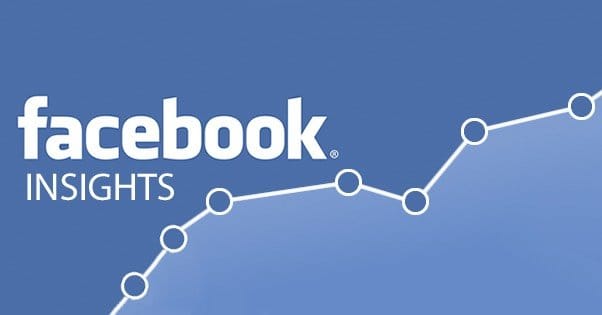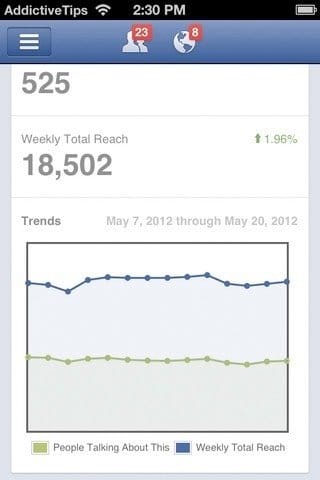 Written by ContentPowered.com
Written by ContentPowered.com
There’s a lot of tracking you can do with Facebook, you just have to know what information you can find where. There’s a lot of it, so buckle in and get ready for the ride.
Facebook Default Insights
Facebook doesn’t allow you to embed any sort of third party analytics code, like Google Analytics. Instead, it has its own analytics suite built in to the platform. It has everything you would want it to have, all in one place, without needing to implement it or set up custom reports to view the data.
What sort of data does Insights show?
- A general page overview with your total likes, the change in likes over time, the number of people talking about your brand, and a basic measure of reach and engagement for your most recent posts. All of this can be filtered by date.
- A post-level readout of the number of people who saw a given post of your organically, as well as via paid reach, the number of people who engaged, and a virality rating for your posts.
- A deeper insight into your audience, the people who actually follow your page. This includes country of origin, gender, age, language, and other demographics information. You can also get a readout of the locations your likes are coming from, like from Facebook itself, ads, a like box or a like widget.
- A similar readout with all of the same demographic information, except limited just to the people who actually see and interact with your posts. This can actually be quite a different set of users.
There’s quite a bit more, of course; you’ll have to go digging to find some of the hidden gems of information Insights shows. Generally, if you want to know something about your audience in general or about how a given post or ad is performing, Insights has a way to tell you.
The Facebook Conversion Pixel
Insights only covers the people who are on Facebook and interacting with your page. What about the people who follow your links and your ads off to your website? Or the people who are on your website and follow links to Facebook? This is where the Facebook Pixel comes in.
The Pixel is very similar to Google Analytics, in that it’s a snippet of code you paste in to your site code. It is primarily used to track the success of ads. The idea is simple; create code and place it on a page that a user can only see when they successfully convert, like a “thank you for your purchase” page. Then, run ads and organic posts that send users to your page.
Through the Pixel, Facebook tracks the users that leave the site and end up on your site. It tracks what they do on your site and whether or not they convert. If they convert, it adds them to a list of converted users. If they show interest but don’t convert, they’re added to a different list, which you can use later for re-marketing.
With re-marketing, you take that list of users who are interested in your business but who have not converted. With that list, you run ads targeting those users, specifically designed to remind them of their interest in your brand. The goal, of course, is to get them to convert as a second chance. It’s typically cheaper, easier and a higher conversion rate than what you would get advertising to a blind audience.
Facebook App Tracking
When you use a Facebook app, you have other methods for tracking. They vary from use to use.
For example, you can use this guide to track the specifics of ads you run within an app you have on Facebook. This is the kind of tracking companies use to record data on games like Candy Crush of Farmville, for example.
Ads you run within the Facebook mobile app are tracked by default through Insights, the same way normal ads are tracked.
If you’re using a “landing page” style app, i.e. a full website within a Facebook app iFrame, you can track it in any way you would track a website. You can use the conversion pixel if you wish, though you have to have a conversion to track within the app. You can also embed Google Analytics code within the website. Some of the popular app creators have tracking built in, either through Google or through their own analytics software.
URL Tracking with Parameters
Another way you can use Google Analytics with Facebook is to track URLs specifically. You can do this with any URL you post in the news feed, even if you boost or promote the post. You can also use these tracking parameters to track the landing page URL you use in your advertising. In fact, it’s a great idea to use different parameters for each ad, so you can study the traffic coming in ad to ad.
These parameters are the UTM parameters provided by Google. You can find a tutorial for the URL builder here.
Essentially how these work is you have a URL, which you plug into the system. For example, www.example.com. Then you fill in data about the campaign and source you want to track. So a link for an ad for Memorial Day, run on Facebook, might be www.example.com?utm_campaign=memorialday&utm_source=facebook. There are more than just those two fields, though; you need a name for your campaign and a medium as well. The name is simple, it can be anything. The medium would refer to whether you used a sidebar ad, a news feed ad, a mobile ad, or whichever other ad you wanted to track.
Once you have these parameters attached to the URL, whenever someone clicks the URL and arrives at your Google Analytics-enabled page, it tracks them specifically. You’ll see their data within Google Analytics. UTM parameters don’t add anything to Facebook Insights, unfortunately.
With all of these ways to track users, it’s a wonder there’s any mystery about how customers act today at all.
